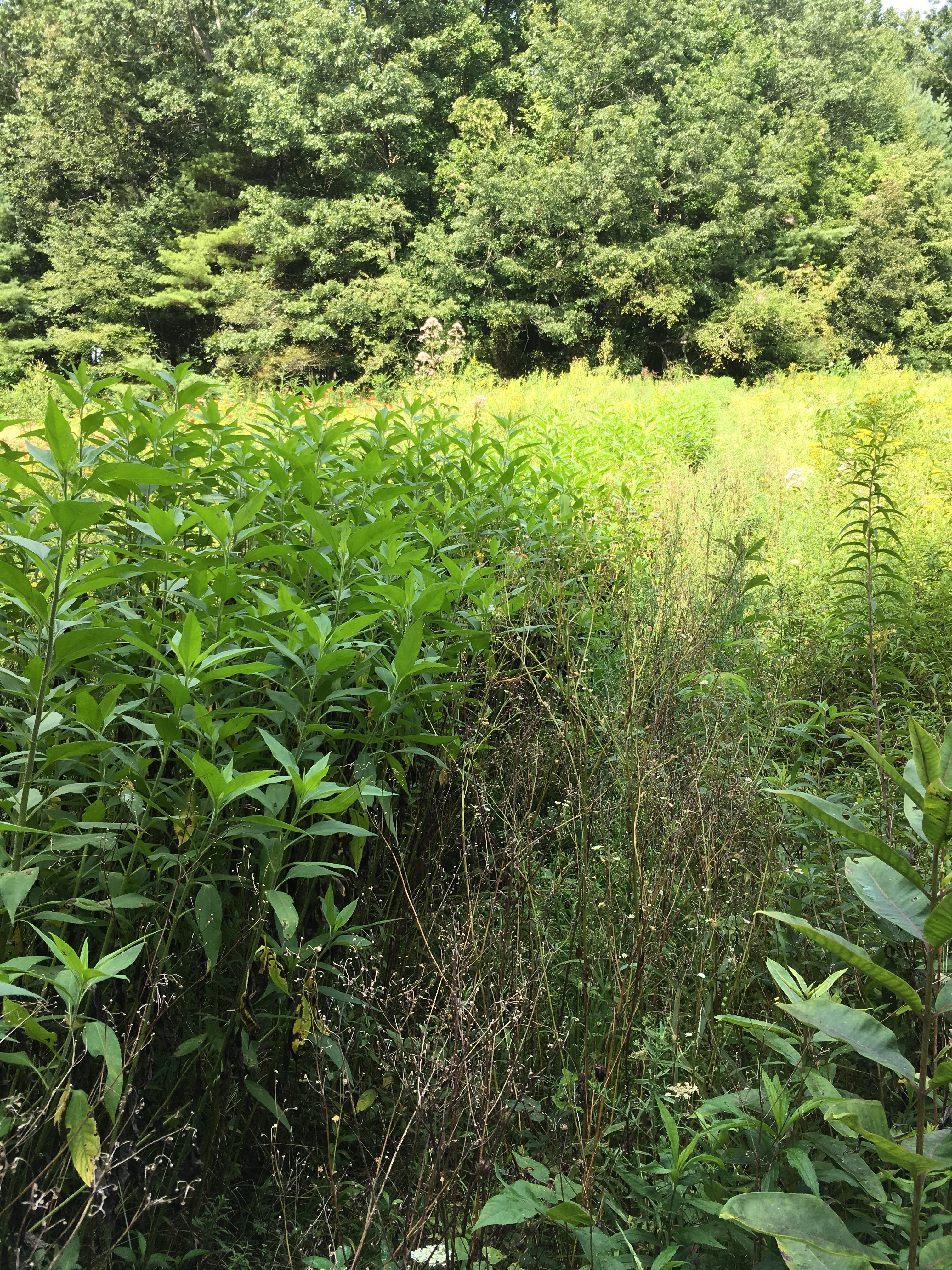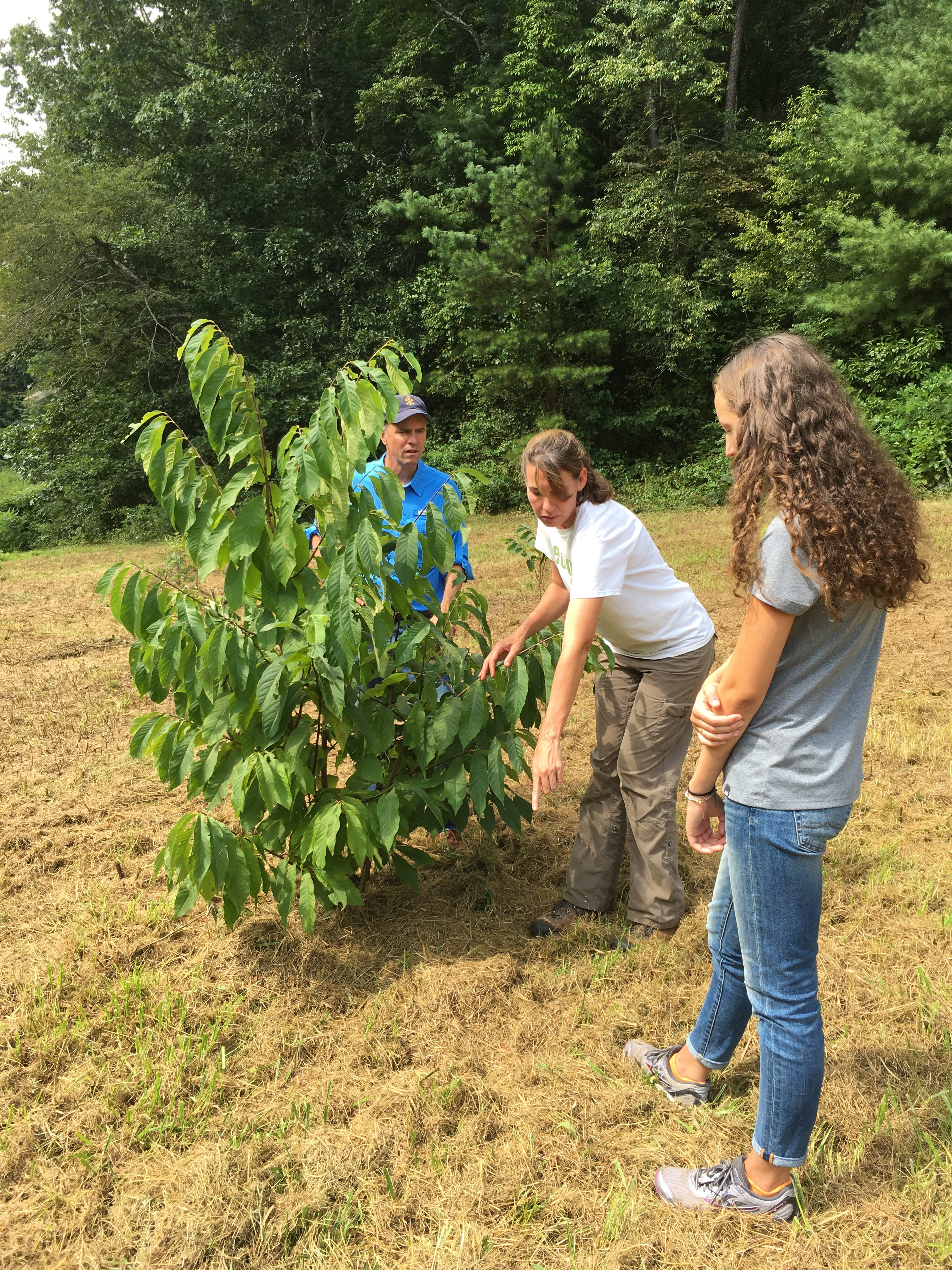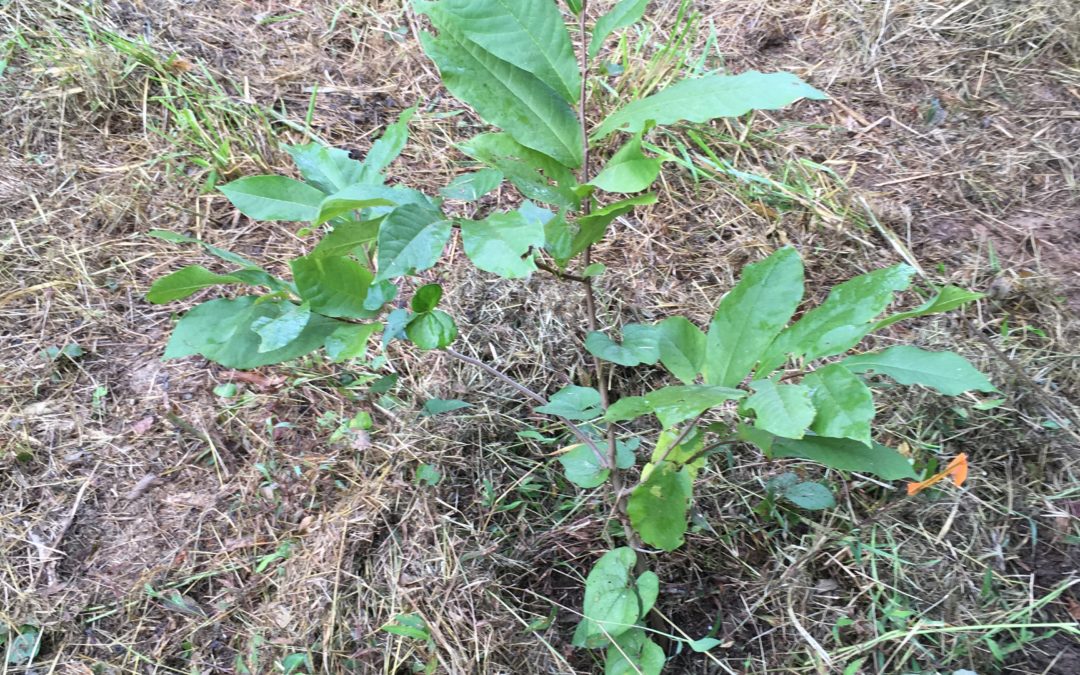This field trip to Milkweed Meadows was part of a summer internship through Foragable Community to study pawpaw. Rachael Boyce was the 2018 summer intern and guest writer for this blog.
Kim Bailey, a pollinator farmer near Hendersonville, NC and owner of Milkweed Meadows, attributes her love of butterflies to what jump-started her interest in farming. An environmental educator for over 20 years, she began creating pollinator gardens as outdoor classrooms and her work has evolved from there. As the name suggests, her property is filled with native Milkweed – a key component in the life-cycle of the monarch butterfly. As a “butterfly-farmer,” Kim utilizes her space to grow native plants that provide food and shelter for butterflies and other pollinators. On Friday, August 18th, Kim spent the morning giving members of Foragable Community a tour of her farm. We toured fields of wildflowers and milkweed, plants she has spent years trying to popularize by encouraging others in her community to grow in their own yards. Kim sees both beauty and purpose in the growing of these plants that many overlook as weeds.
Alongside fields of milkweed and wildflowers, Kim also grows tomatoes, maypop, peppers, squash, peaches, and my personal favorite – the pawpaw (Asimina Triloba)! As a member of the Asimina plant family, and the only host plant for the zebra swallowtail, the pawpaw fills an important role in the life-cycle of this butterfly. Swallowtails use this native fruit tree to lay their eggs, making it a perfect addition to Kim’s pollinator farm. Kim has fallen in love with the taste of the fruit as well! With over 84 trees, she is able to create an ideal habitat for these butterflies while benefiting the sustainability and diversity of her farm. She continues to set an example in her community for others who may be interested or inspired to do the same.
As we walked through the rows of pawpaw, Kim talked us through the past four years of growing this tree at Milkweed Meadows. She highlighted some of her biggest challenges and successes which included caring for the plant before transplanting, frost protection, and sunlight requirements. Overall, she explained, the pawpaw is relatively easy to maintain compared to other fruit trees like apples and peaches because they don’t require insecticides and fungicides. After four years of working with this tree, she is hopeful that some of her oldest trees will begin producing next season. With plans to plant and maintain a pawpaw patch of our own at Catawba Run, we took in as much information as we could about best practices for managing this delicious native fruit!
Kim shared some details about how she manages the delicate root system and tap root of the pawpaw. She says making sure to transplant at the right time is key to the success of a young tree. If you transplant too late, you compromise the health of the tree. While pawpaw requires full-sun for best fruit production, for the first few years the plant does best with some shade. Kim filled us in on the simple solution she created for this particular quirk! Using a large piece of cardboard, she covers the ground surrounding each seedling, mulches the cardboard, and waits for the surrounding weeds to grow up. These weeds shade the tree but do not compete with the seedling. In the winter months, paw paw growers face the challenge of frost cracking, which happens during freeze-thaw cycles. The rapid expansion and contraction of water within the wood and bark of the tree can cause cracking at the base of the tree. Kim has begun coating the base of the tree with diluted white latex paint to combat this cracking. It is the simple solutions like these, developed by other paw paw growers in our region, that we are especially excited to try at Catawba Run!
Milkweed Meadows is an innovative example of creating a healthy and resilient environment that benefits the whole of the community. Kim’s background in environmental education has given her the tools and platform to create habitat for native pollinators in Western North Carolina while benefiting her own land and her community as a whole. Kim’s deep knowledge of the life history of native plants, her passion for butterflies and her contributions to her local community as an educator and a vegetable farmer is inspiring and encouraging. It was great to meet someone who has such a positive and unique impact on her land, community, and ecosystem.

Kim, Rachael, and Rachael’s Dad Mark share a laugh during the tour of Milkweed Meadows.

A shot of some of Kim’s milkweed.

Kim talks pawpaw shading strategy with Rachael and Mark.

